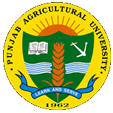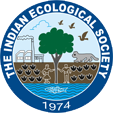Impact of Adoption of IPM Technology against Bemisia tabaci (Gennadius) on Bt Cotton in Punjab
Vijay Kumar, Jagdish Arora1 and Gurpreet Kaur
Department of Entomology, Punjab Agricultural University, Ludhiana-141 004, India
1Regional Research Station, Abohar
Corresponding author’s email: vijay_ento@pau.edu
Keywords:IPM, Whitefly, Cotton, Punjab, Impact
1. Background
Bt cotton is provides protection against bollworms but it does not provide resistance against sucking insect pests. Among these sucking insect pests like whitefly, leafhopper, thrips, etc. cause economic damage to cotton. Whitefly, Bemisia tabaci (Gennadius) appeared in epidemic form in Punjab during kharif 2015. Consquently, the cotton productivity in the Punjab state fell substantially from 574 kg lint/ha in 2014-15 to only 197 kg lint/ha in 2015-16 (Kumar et al 2020). The indiscriminate use of insecticide, tank mixtures with synthetic pyrethroids has aggravated the problems of whitefly. Therefore, a special attention is required to promote the IPM technologies on Bt cotton. The focus of an IPM programme was on use of non-chemical and to promote the judicious use of insecticides based on economic threshold level (ETL) to reduce insecticide load in the cotton agroecosystem.
2. Material and methods
Under the project, Bathinda, Mansa, Sri Muktsar Sahib and Fazilka districts, covering 80 per cent of cotton growing areas were selected for dissemination of IPM technology during 2018-19. In all eight villages were adopted. The area under cotton in the IPM adopted farmers was 1625 acre. The numbers of farmers involved were 160. In each adopted villages, literature on cotton production and protection technology was distributed to the farmers at their doorstep. Farmers training programme were organized at regular interval. The IPM strategy included regular surveillance of whitefly on alternate hosts, clean cultivation, timely sowing, use of non-chemical approaches like yellow sticky traps, neem based insecticides, use of insect growth regulators based on ETL, proper spray methodology etc. IPM farmers were compared with non-IPM farmers and impact of adoption of IPM on socio economic status of farmers was studied.
3. Results and conclusion
In Punjab, the average number of insecticide sprays for IPM adopted farmer was 5.51. However, it was 6.75 in non-IPM farmers (Table 1). There was 18.37 per cent reduction in number of sprays over non-IPM farmers. The mean cost of sprays was more in non-IPM farmers (Rs 3469) as compared to the adopted IPM farmers (Rs 3225). However, per cent reduction in cost of sprays was 7.03 per cent over non-IPM. In IPM project area, maximum numbers of sprays were for the control of whitefly and jassid. Seed cotton yield was higher (9.91 q/acre) in adopted IPM farmers as compared to non-IPM farmers (8.94 q/acre). The average net profit was more (Rs. 47283) in the IPM farmers as compared to non-IPM (Rs. 37777).
References
Kumar V, Kular JS, Kumar R, Sidhu SS and Chhuneja PK 2020. Integrated whitefly [Bemisia tabaci (Gennadius)] management in Bt cotton in north India: An agroecosystem-wide community based approach. Current Science 119(4): 618-624.


